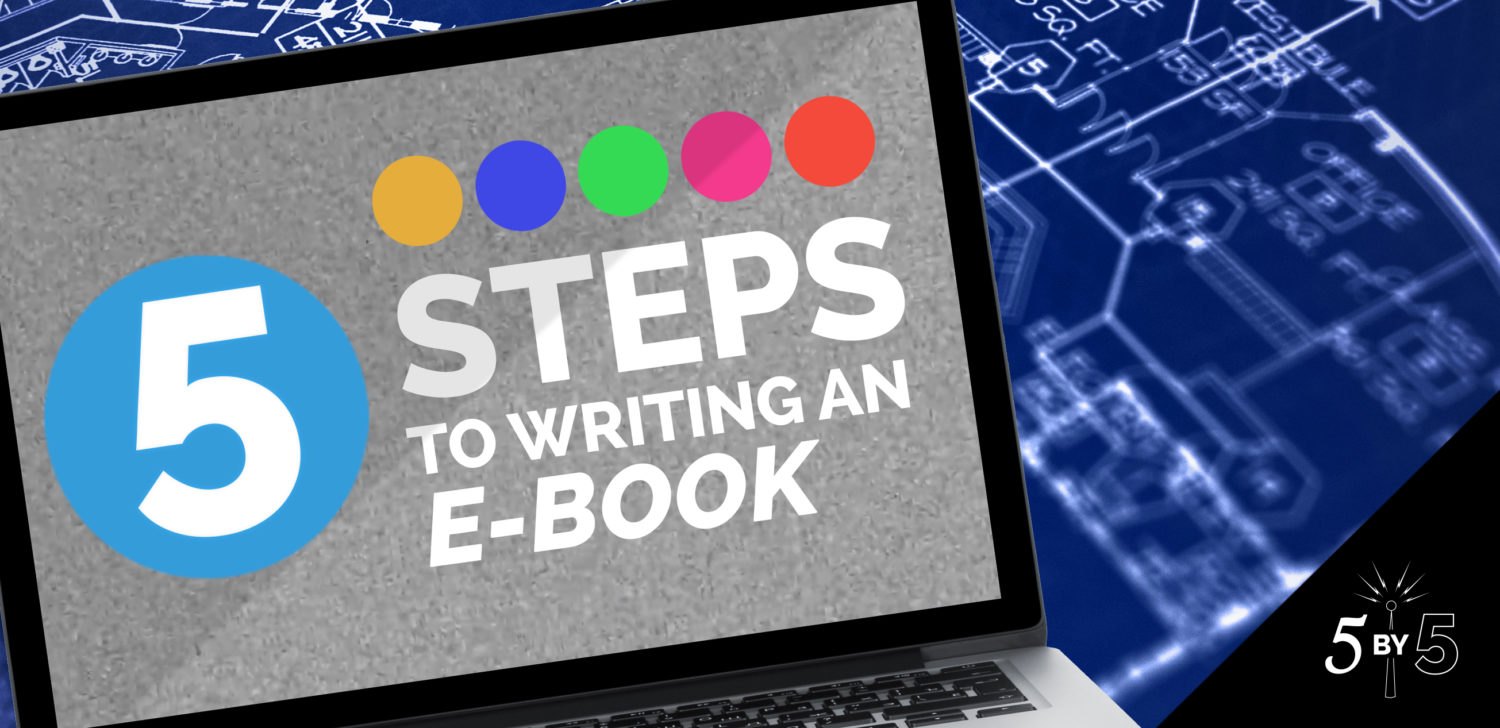
You know you need content, but that’s like knowing you need to file your business taxes—easier said than done. Writing an e-book can be a daunting process. How do you know the topic will resonate with your audience? How will you find enough information to fill an entire e-book? Damn it, Jim, you’re a CEO, not a writer!
Step One: Research
I like to say that writers are just glorified researchers. I’m joking, but only a little. It’s true, though, that we writers become temporary experts on whatever topic about which we’re writing. And, at least in my case, as soon as the content is delivered, I forget half of what I’ve learned (I’ve got to make room for more new research!). The first key to research is understanding who will be reading the content. You must have a strong idea of your reader. If not, create a persona based on what you do know. Another thing I’ve learned after years of interviewing subject matter experts is that clients don’t always know what they know. Meaning, to them, the knowledge is obvious. But to the outside world, it’s gold. And if a writer can find gold, well that leads to unique content that’s not only relevant but highly valuable.
- Conduct SME interviews to get the gold your content needs to stand out
- Study your audience.
- Search for existing industry content – you want fresh – not regurgitated!
Step Two: Themes and words
As you research, make a list of key words, phrases, terminology, trends, statistics… anything you come across that’s specific to the topic at hand. Once you have a good list, begin looking for recurring themes. Save this list – you’ll use it later when you’re writing your first draft. Your theme should match the audience’s personality and the tone of your content.
Step Three: Create an outline
Remember those outlines you created in school for research papers? Yeah, not those. Think of an e-book outline more like a Table of Contents (TOC) from your favorite book. It lays out the chapters and provides a quick synopsis of what each will cover. Your TOC should be written in the same voice in which you intend to write the e-book. Most times this is not your voice. This is where a talented writer makes all the difference. Is your brand witty and sharp or introspective and professional? Is it casual or more buttoned up in tone?
As you write the outline, think about the information that will inform each chapter. Would a subject matter expert help to fill in the blanks? Make a list of outstanding questions and request interviews with clients or stakeholders to get your answers.
Get buy-off from the powers that be on the TOC before writing the full draft. Ask for feedback on the topic, the content, and the voice/tone.
Step Four: Write a rough draft
Rough is the operative word here. This is where you begin to fill in the blanks. By now you likely have several pages of notes from your research and interviews. Your first step is to move each note, stat, quote, etc. under the appropriate chapter. Keep writing. When you’re not sure what you want to say, type that exactly. Feeling angry? Type that. Need to cuss. Yep, type that too. This is a rough draft – for your eyes only. We’ll clean it up for the brass. Once you’ve got something that’s starting to resemble an e-book, look for areas that need more insight. Are you adding value in every chapter? Is there missing information you can research?
Every chapter should be set up in the same way. Creating a template for the entire e-book will make it easier for the designer to lay out the pages and that makes it easier to keep your reader interested.
- Start with a proposed title
- Lay out your chapters and give each a specific topic
- Begin organizing your research notes by chapter
- Find something that ties it all together.
- Start and end each chapter the same way (with a compelling quote or stat, for example)
- Remember that you’re telling a story. The end of each chapter should lead into the beginning of the next.
Step Five: Clean up the client draft
Now it’s time to take your rough draft and 86 all the foul language, question marks and internal notes of frustration. Begin organizing the content more thoroughly by adding subheads and sidebars. Again, make each chapter equal. If all but one chapter has a customer story, find one for the remaining chapter. If you’ve got six chapters but only three customer stories, spread them out, then add a sidebar or graphic to the remaining chapters to make them look cohesive.
Run a word count on each chapter – they should all be about the same length. If one chapter is much longer than the rest, maybe you have enough info for another chapter or sidebar. If not, cut it. Take a machete to your words if you must but make every chapter as equal as possible.
- Look for ways to add color and depth to each chapter. Perhaps a customer story could fold in nicely, or a sidebar of pro tips.
- Make it easy for the designer to lay it out
- Look for derivative content opportunities. Maybe you’ve written a sidebar comparing to options—would that make an interesting infographic or interactive quiz?
Once you’ve got a client-approved draft, you can move into the design phase. We’ll cover that in a future post. Until then, what does your content creation process look like? We’d love to hear your content strategies! Want to talk shop? Reach out – we’d love to hear from you!


